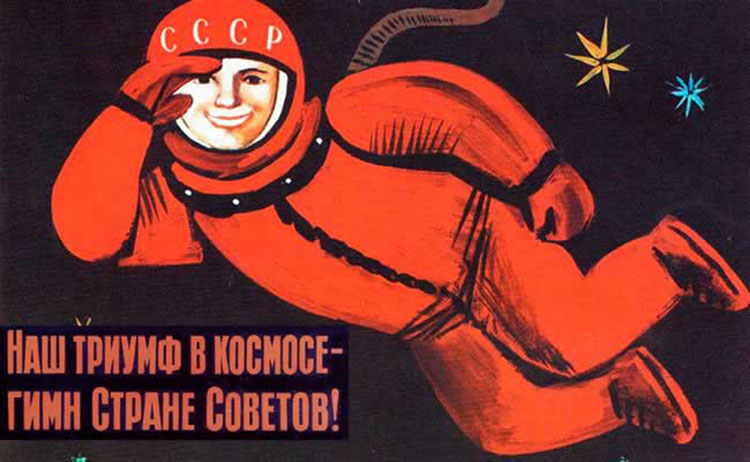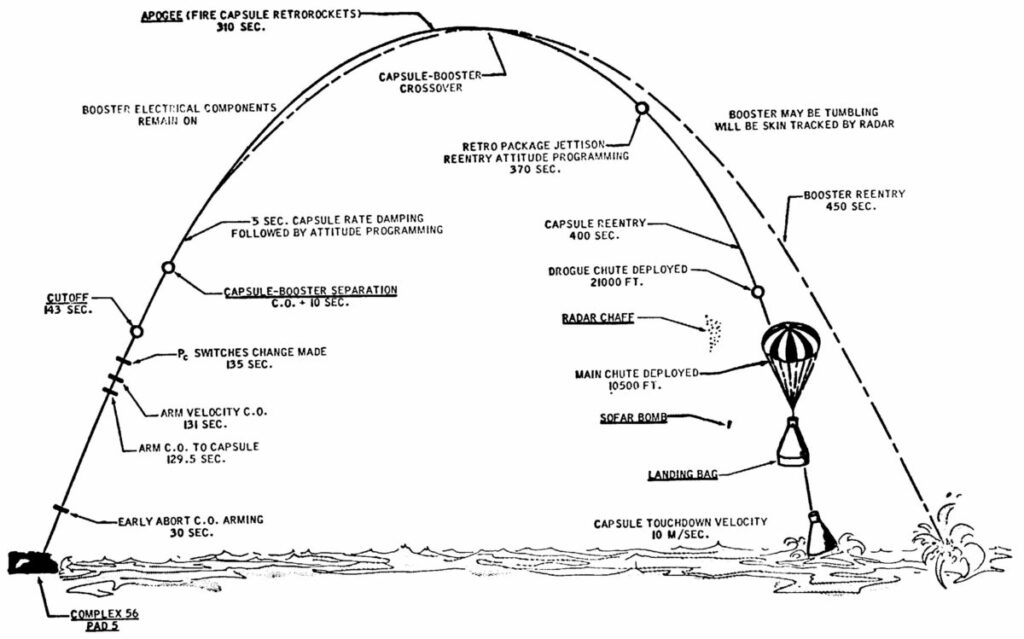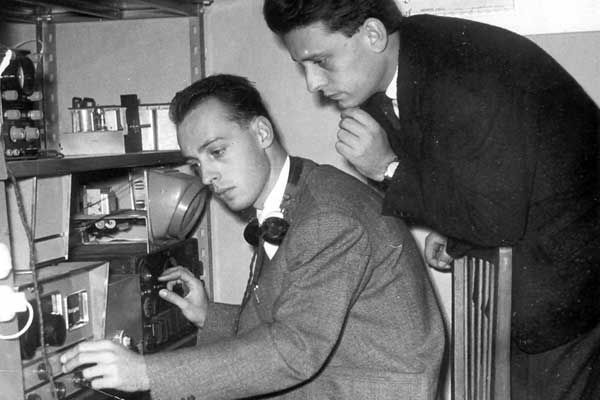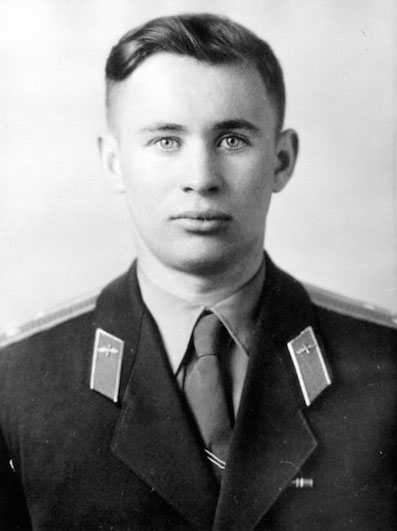The first person to rise beyond the Earth’s atmosphere and get into outer space was a citizen of the USSR, Yuri Gagarin. However, we have much less evidence of the “authenticity” of his flight than, for example, evidence of the landing of American astronauts on the Moon. But humanity as a whole perceives this fact as indisputable, although there are still those who want to question it. They claim that space flights took place before, but ended tragically, so the Soviet government hushed them up.

the anthem of the Country of the Soviets
Soviet cosmonautics was, among other things, a powerful ideological weapon
The limited amount of information about Gagarin’s flight is explained by the well-known Soviet top secret. It is also the reason for the appearance of conspiracy theories regarding that he was not the first in space. These versions periodically get into the media, although they are less popular than the denial of the landing of Americans on the Moon. Let’s recall the most famous of them.
Suborbital Flights
The first space trips of American astronauts did not involve a complete orbit around the Earth, but took place along suborbital trajectories. Two manned Mercury capsules launched with Redstone rockets in May and July 1961 did not reach the first space speed. They rose to a height of 187-190 km, after which they made a landing about 490 km from the starting point. The astronauts were in a state of weightlessness for a few minutes.

It would be logical to assume that similar experiments were carried out by Soviet specialists before Gagarin’s flight, hiding them under the heading “Top secret”. After the collapse of the USSR, it became known that these assumptions have a basis. Back in the late 1940s, the country’s leadership was considering the possibility of launching test pilots on captured German V-2 rockets. Preparations for them began within the framework of the so-called “Project BP 190”. In 1951, the launches of sealed capsules with dogs began. For them, several modifications of the Р-1 series of rockets were used, later — Р-2A and Р-5A. It was the last one, according to some researchers, that raised the pilot Alexey Ledovskikh to space altitude. Other sources mention the surnames of Sergei Shiborin, Andrei Mitkov and even one woman — Maria Gromova.
Ideally, these rumors are refuted by the fact that Gagarin and all subsequent Soviet cosmonauts received the title “Hero of the Soviet Union” for their flights. Surely, a test pilot who was the first to reach cosmic heights would have received it, even posthumously. But among the listed surnames, no one has such a title. Actually, if such heroes were classified at the time, after 1991 they would have become known for sure.
Tests of high-altitude suits
Another source of versions about the “Before Gagarin cosmonauts” could be the testing of sealed suits for flights at high altitudes. They included parachute jumps from balloons rising 20-25 km above the ground. Do not forget that all this happened at the turn of the 50s and 60s of the last century. The figure, dressed in a hitherto unseen suit and descending from the sky on a large bright parachute, could seem to casual witnesses to be an alien from outer space.
The famous Soviet journalist Yaroslav Golovanov raised this issue in his book “Cosmonaut No. 1”. There he published a conversation with one of the participants of such tests — parachutist Alexei Belokonov, who also told about his other colleagues. Among them were candidates for the “Before Gagarin flight”: Ivan Kachur, Gennady Zavadovsky, Peter Dolgov, Alexey Grachev. But, according to Belokonov, none of them had ever crossed the conditional boundaries of outer space and had nothing to do with rocket technology tests at all.
Secret of Vladimir Ilyushin
In the same book, Golovanov mentions another famous name — Vladimir Ilyushin. Being the son of an outstanding aircraft designer, Sergei Ilyushin, he also decided to devote his life to aviation and became a test pilot. He has several world altitude records on his account. However, in the West he became famous for a completely different reason and not entirely by his own will.
On April 10, 1961, an article appeared in the Daily Worker newspaper, the author of which suggested that a recent report about a car accident involving Vladimir Ilyushin was intended to hide his unsuccessful space flight, which took place a few days before Gagarin’s launch. In this story, everything looks incredible: a spacecraft called “Russia” (in the USSR they could not have given it such a name), and an emergency landing in China, with which the Soviet Union had strained relations… In addition, the American tracking system for near Earth space, NORAD, would definitely not be able to miss an “extra” large orbital object. But there is nothing like this in its archives. Nevertheless, the myth of the “first cosmonaut Ilyushin” still pops up on the pages of some publications.
“Italian Radio”
The only possible source of this myth can be considered the radio interception of Achille and Giovanni-Baptiste Judica-Cordiglia. In the late 1950s, these two Italians built an amateur radio station in the suburbs of Turin and began listening to outer space, where the first artificial satellites were already flying. In May 1960, an article appeared in the local press that the Judicial-Cordelia brothers allegedly intercepted messages from space in Russian. In November of the same year, they reported an SOS signal in Morse code from a manned spacecraft that had crashed. In early February 1961, someone’s heavy breathing was allegedly heard from orbit, as well as fragments of phrases uttered by a woman. Finally, shortly before Gagarin’s flight, Italian radio amateurs reported that they were able to “eavesdrop” on the Soviet cosmonaut’s negotiations with the command post. In their opinion, an unknown manned spacecraft made at least three orbits around the Earth.

For another three years, the Judica-Cordiglia Radio station continued to receive signals from space. Most often, these were requests for help or farewells from the crew of another spacecraft, “forever flying away from Earth”. Modern researchers have no doubt that the absolute majority of the brothers’ messages had no basis and were made solely for the purpose of creating a sensation and attracting attention to themselves. On the other hand, the recording of the sounds of breathing and heartbeat could indeed take place. The fact is that to test the operation of radio communication systems, Soviet specialists launched spacecraft several times that broadcast cardiograms and tape recordings of human activity. But there were no astronauts on board these spacecraft.
Witnesses of “Ivan Ivanovich”
During several unmanned orbital tests of the Vostok spacecraft, there were dummies with built-in sensors in the pilot’s seat. Employees of the cosmodrome and search teams respectfully called them “Ivan Ivanovich”. Perhaps, however unlikely it may be with a high level of secrecy, random people turned out to be among the witnesses of the landing of such devices. They saw a motionless humanoid figure being taken out of the chair, and decided that it was a dead cosmonaut.
Information about the tests with “Ivan Ivanovich” began to be declassified back in the 70s. One of the reasons for removing the “top secret” stamp was the refutation of such rumors. But for those who were involved in their appearance, it is difficult to part with the feeling of “carriers of the great mystery”. Therefore, such conversations and versions still arise.
The best way to refute these rumors is a simple economic analysis. In the 50s — 60s of the last century, the Vostok manned spacecraft were the pinnacle of Soviet technology achievements. Designing and launching each of them, especially with life support systems, required a huge amount of resources, and most importantly — time. All their launches before the Gagarin launch have been known for a long time. Researchers cannot find a single “superfluous” spacecraft on which at least one “unaccounted” cosmonaut could fly.
After all, Gagarin, before taking a seat in the Vostok capsule, knew perfectly well that his flight could well end tragically. He wrote a farewell letter to his relatives, and the Soviet news agency SNA prepared two versions of the message about the historical event — both in case of a successful launch and landing, and in case of the death of the first cosmonaut. At that moment, the “space race” between the USSR and the USA had reached its peak, and each country needed an immediate result. And the first of them, as we now know, was ready to make any sacrifices for it.
* * *
Finally, it would be worth remembering another person who is sometimes called the “first victim of Soviet cosmonautics” and is even considered a candidate for the “Before Gagarin flight”. This is Kharkiv resident Valentin Bondarenko, who died on March 23, 1961, shortly after his 24th birthday. The cause of death was a fire that occurred during tests in a pressure chamber filled with pure oxygen under reduced pressure. If Bondarenko had really flown into space on April 12, he would have become the youngest space traveler and would have held this record until last year.

But those who have understood this issue in more detail understand that Bondarenko had no chance of becoming the first cosmonaut. Firstly, for propaganda reasons, they had to be only Russian by nationality, and of “worker-peasant origin”. Gagarin and his understudy Titov met these requirements, but the first resident of the “Star City” Ukrainian Pavel Popovich — no longer, so he was in fourth place in the list of Soviet space heroes.
And secondly, already in October 1960, the first six candidates for space flight were officially approved. It included Yuri Gagarin, German Titov, Andrian Nikolaev, Pavel Popovich, Anatoly Kartashov and Valentin Varlamov. Later, the last two were replaced by Grigory Nelyubov and Valery Bykovsky. Bondarenko could not expect to go into space until at least one of the listed candidates had been there. Unfortunately, this was prevented by his tragic death…
Follow us on Twitter to get the most interesting space news in time
https://twitter.com/ust_magazine

